 -History-
-En Mass-
-Artistry-
-More-
-History-
-En Mass-
-Artistry-
-More-

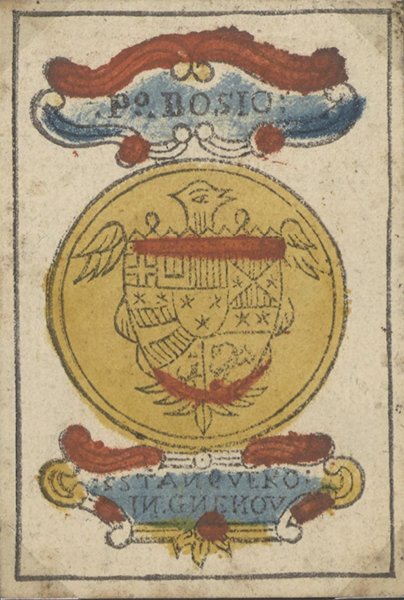
Once introduced, playing cards spread quickly across the entire world. Design and imagery of the cards varied wildly place to place, adopting different suits and characters.

While early playing cards were incredibly variable, modern playing cards have settled around a standardized set of suits and visual design.
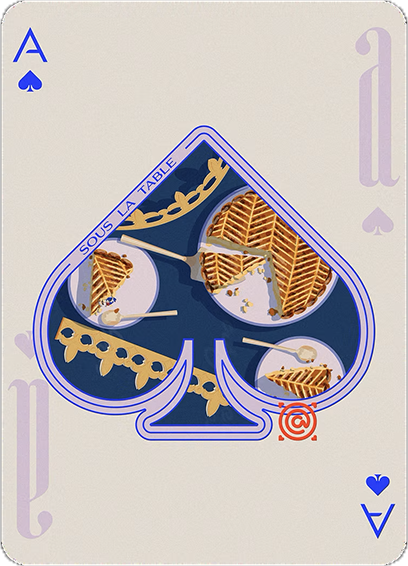

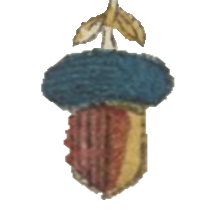
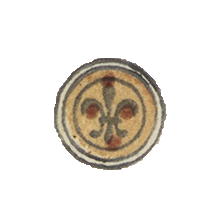
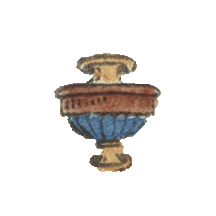
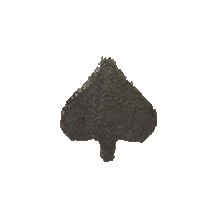
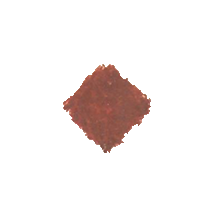
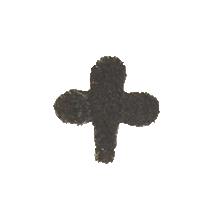
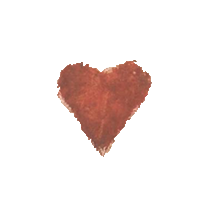
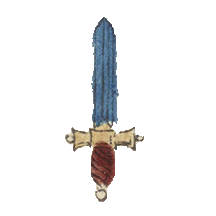
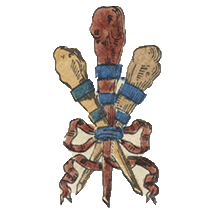
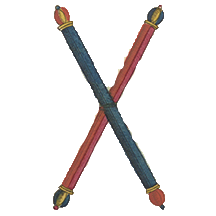
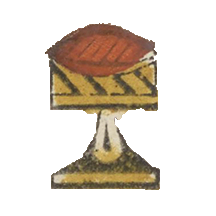
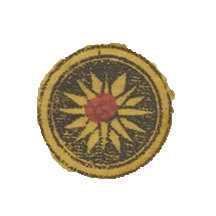
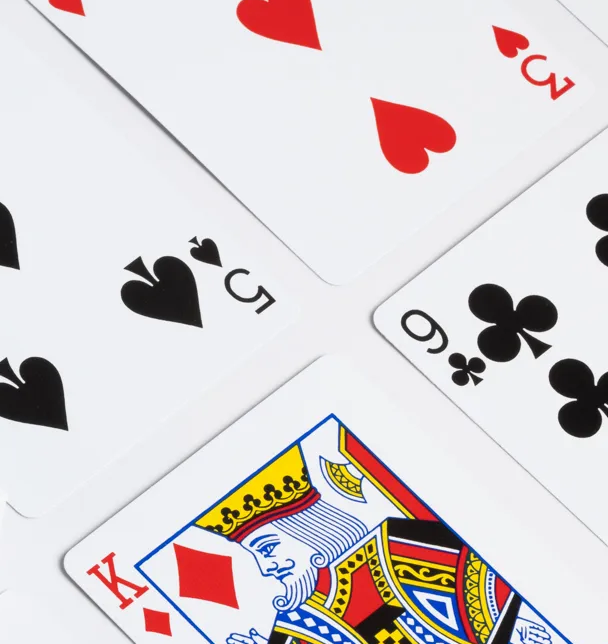
While other games rely on a singular set of rules, cards have the versatility to play various games. Any deck of cards can be used infinitely for any card game.

Some attribute cards to mystical uses and tarot cards were created as a deck of cards for the purposes of reading fortunes or revealing the future.
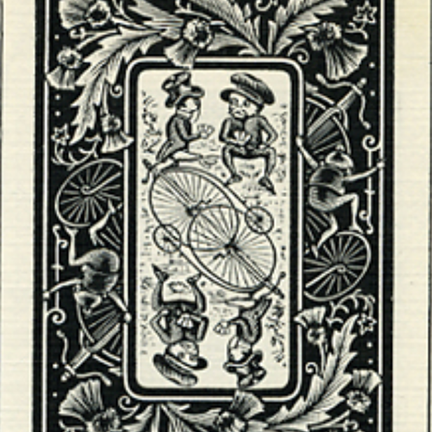
Among the variety of games played with cards are games that involve gambling, a reason cards at times have been banned, taxed, or discouraged.
Playing cards are believed to have originated in their earliest form in China before the year 1000, soon spreading to Persia, Egypt, and the rest of the world via trade routes and armies. Early playing cards were handpainted for a select few, when woodblock printing was invented in the 14th century playing cards could be mass produced for everyone. The design of the cards were constantly reinvented.
Islamic card suits featured cups, coins, swords, and sticks while Spanish and Italian card suits featured cups (coppa), coins (denari), swords (spade), and clubs or batons (bastoni). German card suits featured hearts (herz), acorns (eichel), bells (schelle), and leaves (laub) and Swiss card suits featured acorns, shields, bells, and leaves. French card suits use hearts, trefoils, squares, and spearheads but have become the standardized card suits known worldwide as hearts, clubs, diamonds, and spades.
The court cards or face cards are known today for featuring the King, Queen, and Jack but certain cards took out or replaced these. After the French Revolution in 1789, French cards refused to feature monarchs and instead depicted democratic ideals until Napoleon came into power and reinstated monarch cards.
Before cards standardized to singularily depict numbered pips of each suit, these cards depicted more court positions and occupations beyond just King, Queen, and Jack. Coutrly or official positions like knights, knaves (upper and under), chamberlains, marshals, heralds, cupbearers. Occupations such as clerics, footmen, cooks, and fishmongers.
Note: This information has been compiled from a number of sources, some of which are slightly contradictory because early playing cards are so varied. Most sources referenced here are centered on the European evolution of playing cards and have not tracked the development of playing cards in countries outside Europe.
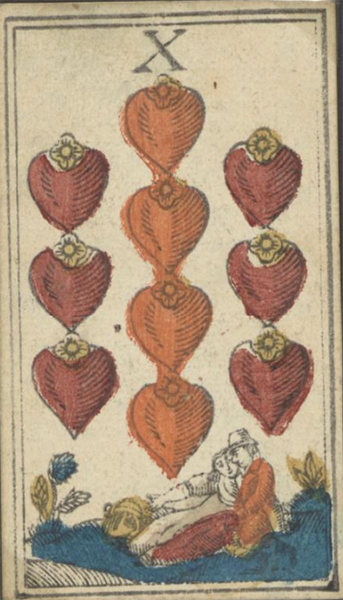
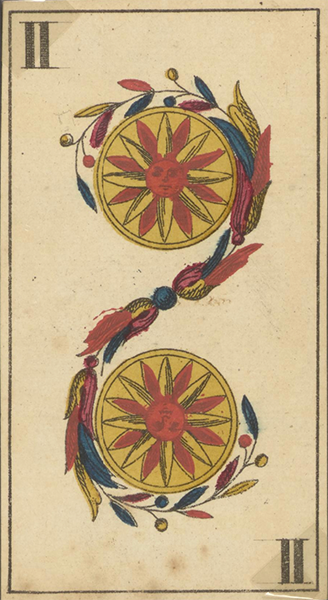
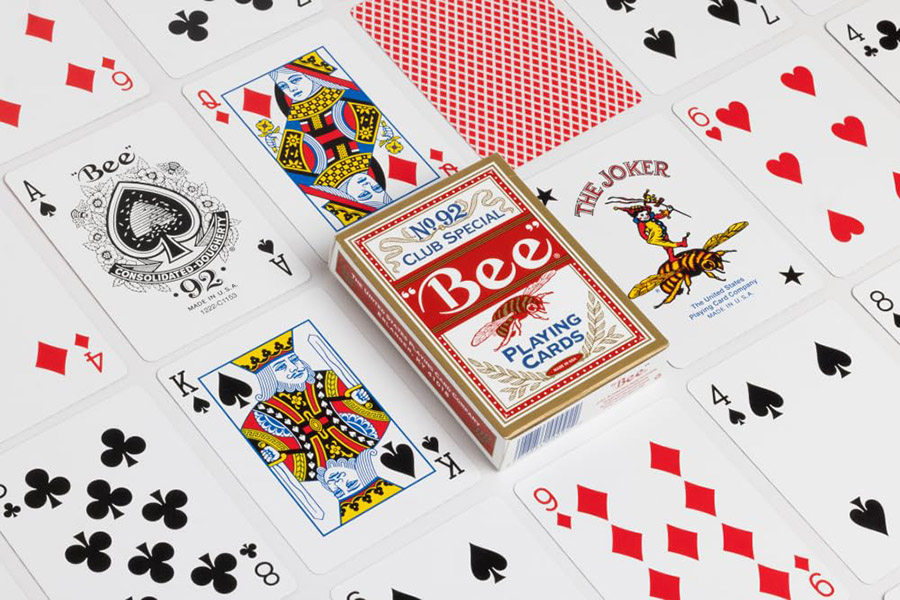
The 19th century saw playing cards standardize around the modern format through a number of innovations. American card manufacturing introduced corner indices, the format of putting the number/letter and suit in the top right and bottom left corners of each card. This allows players to see the most relevant information on each card with them overlayed atop one another.
Where previous cards had plain backs, now designs, pictures, or advertising materials started to cover that space. This hid wear and tear over time and prevented people from writing on card backs. Souvenir card packs would feature photos of a specific location, commemorate an event, or carry a contemporary political message.
Custom plastic card decks are frequently created for casinos and treated very sensitively to ensure they can not be mimicked for the purposes of cheating. Airlines in the 1920s began creating their own decks and giving them to passengers before subsiding after the 1970s. Law enforcement departments have created cold case cards featuring photos of cold case victims and missing persons for dispersal in prisons for the chance it might prompt new information as well as most wanted cards for use by military personal to memorize faces. During WWII the United States Playing Card Company were tapped by intelligence agencies to hide maps inside cards for American and British prisoners.
Standard card decks can be used for a variety of games because they include exactly 52 cards, 13 of each suit plus 2 Jokers (a new invention from 1865 American card manufacturers). Non-standard decks are used for specific games and increase the number of cards and suits accordingly, also called transformation decks. Stripped decks reduce the number of cards to play specific games.
Arynlei is a multidisciplinary digital artist based in Chicago. Arynlei has made 3 full sets of original playing cards available for sale on her website both as sets of cards as well as uncut prints for framing with more on the way. Her process is very community influenced and connective and this practice is most visible in the At the Table set of cards.
At the Table is a set of cards revolving around family traditions and the different expressions of community that find themselves at home around a table. Each card is inspired by and referential to a personal story submitted to arynlei, all of which are viewable alongside the card on her website. These cards are made through digital illustrations in adobe illustrator.
"Each card in this deck began as a memory, either my own or shared by the project's community. Through illustration, each card captures moments of love, loss, tradition, and laughter shared around a table."
Old Tides is a set of cards created around the theming of water and using entirely manipulated public domain imagery associated with water.
Arynlei continues to create playing cards sharing the process and development on social media.
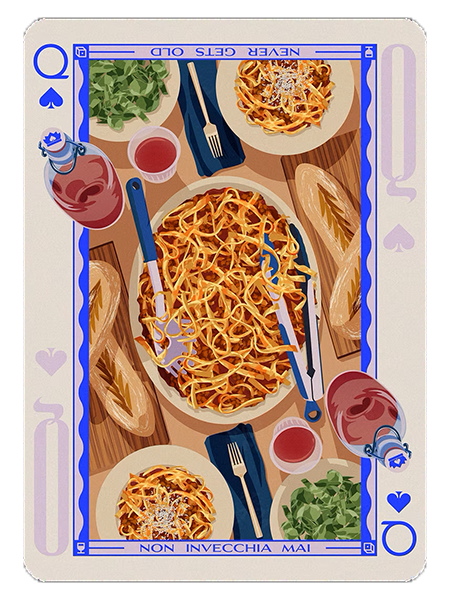
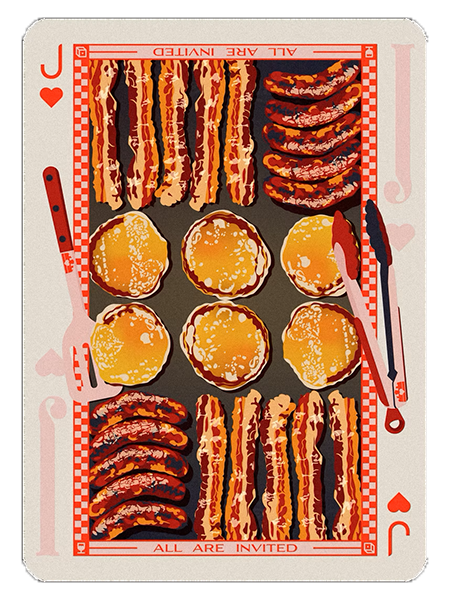
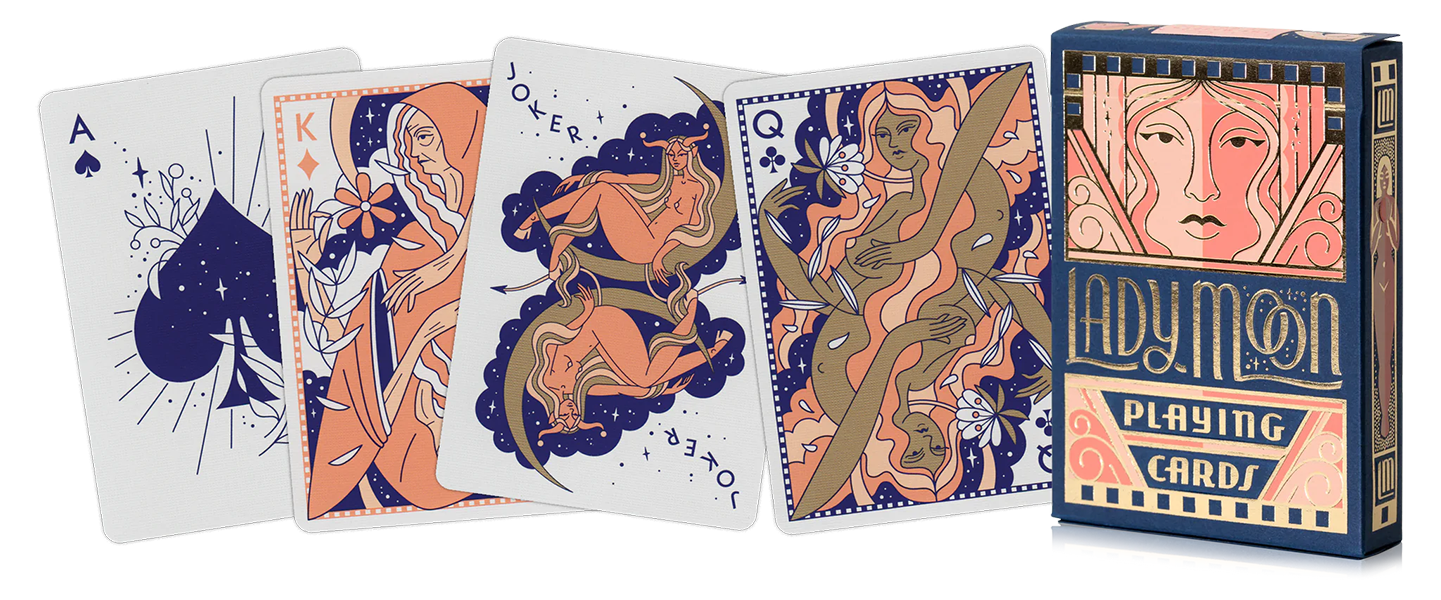
Kelly Thorn is a multidisciplinary artist based in Philidelphia. Thorn is a tattoo artist as well as a creator of both playing card and tarot card decks alike.
Lady Moon is a deck initially commissioned by a club until the custom deck fell through and Thorn repurposed the concepts as a story of the divine feminine through different phases. The design draws inspiration from Art Deco and archetype of the Triple Goddess to tell a story. Sold by Art of Play
Tarot of Oxalia continues Thorn's interest in mythology and cosmic fantasy with an original Tarot deck. The world of the cards is created out of science fiction, poetry, and abstract art.
"And so I created these planetary bodies that all exist within the universe of Oxalia. I wrote poems for each of the planets, inspired by writers like Octavia Butler and Ursula Le Guin, as well as some occult mystics from the 20th century."
Mauro Martins is an illustrator and designer from Brazil. His work spans illustration and poster creation to packaging and clothing, all within his style of dense doodle like illstrations.
The Harmony Collection is a set of 4 decks of cards, Space, Air, Land and Sea, each attributed to a different realm of nature and myths about the creatures that reside there. For each deck sold, Art of Play committed to planting 1 tree.
The Space deck depicts astronauts among the sun and stars, aliens and ufos. The Air deck depicts birds among helicopters and clouds. The Land deck depicts plantlife among elephants, foxes, unicorns, and all manner of creatures. The Sea deck depicts mermaids among octopi, tutles, and submarines in swirling undersea environments.
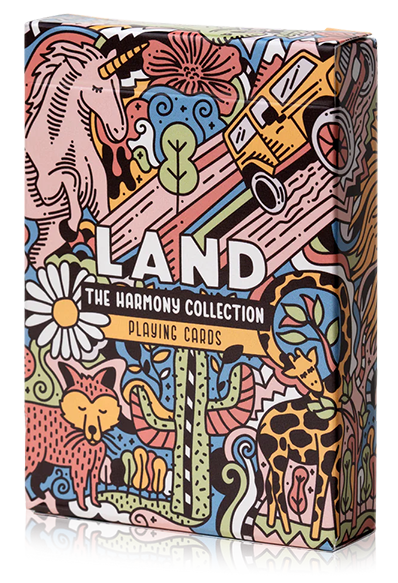
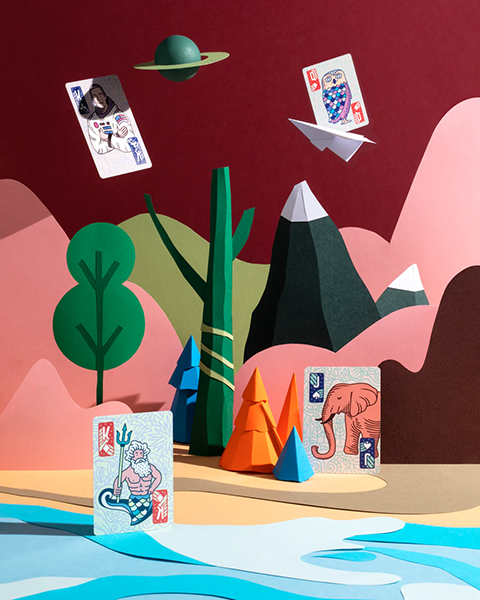
Designed by Michaela Acton, 2025